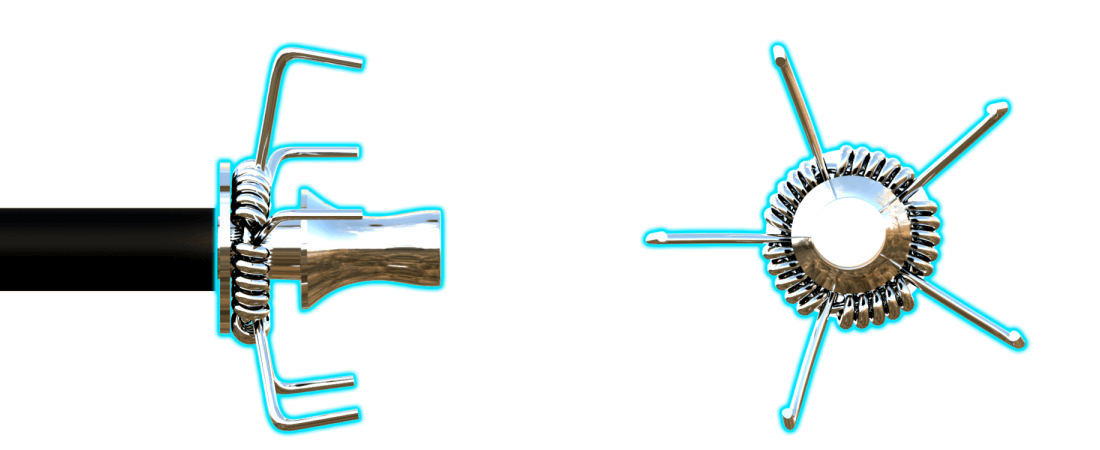Parts of an Arrow
The nock, fletching, shaft, and arrowhead are the four primary components of an arrow, each performing a critical role.
The nock is a small notch at the rear that clips onto the bowstring; it centers the string on release, ensures consistent alignment, and affects how the arrow leaves the string.
Fletching refers to the vanes or feathers attached near the nock; typically three per arrow, fletchings stabilize flight by creating drag and inducing a slight spin, correcting minor misalignments and improving accuracy.
The shaft is the arrow’s long body and backbone, made from materials such as carbon, aluminum, wood, or composites; its straightness, weight, and spine (flexibility) determine flight characteristics, penetration, and how the arrow tunes with a specific bow.
The arrowhead, or point, is mounted at the front and comes in many designs—field points for target practice, broadheads for hunting, and specialized tips for target-safe or penetrating applications. Point weight and shape influence trajectory, energy transfer, and terminal performance.
Together, these four parts must be matched—shaft spine with point weight and fletching type—to produce consistent, safe, and accurate shooting.

Shaft
The arrow, regardless of shaft material, must have the correct spine (stiffness) to match the bow. As an arrow is released the shaft bends before straightening in flight. Incorrect spine will cause erratic and inaccurate arrow flight. Draw length, bow weight and design, method of release, and the type of arrow head being used are all factors to consider when choosing the correct arrow for an individual.
Modern arrow shafts are made of four basic materials:
Wood shaft
- least expensive
- has a tendency to warp or splinter with age
- most popular with traditional archers
- used with long bows and recurves only
-
may shatter if shot from a compound bow
Fiberglass shaft
- most durable but relatively heavy
- primarily used for bow fishing
Aluminum shaft
- very durable
- light in weight
- popular with bow hunters and target archers
Carbon-graphite shaft
- durable
- very light
- relatively expensive
Fletching

The plastic vanes or feathers on an arrow are referred to as fletching. Fletching creates wind drag providing stability and accuracy in flight.
Fletching will also cause the arrow to spin similar to a rifle bullet, which also improves accuracy. The most popular fletching is comprised of three or more feathers. One of the feathers will be a different color and is called the "cock" feather. The remaining feathers are referred to as the hen feathers. The type of arrow rest being used determines the angle between the bowstring and cock feather. Some archers prefer four fletches in which case there is no cock feather.
Arrowhead
The most common types of arrowheads are:
Broadhead
- Used primarily for big game hunting
- The number of steel blades it contains may vary
- Arrowheads vary according to the type of shooting

Blunt Point
- Used for small game hunting or some types of target shooting
- Made of steel, hard rubber or plastic

Target Point
- Steel points used for target shooting and small game hunting
- Usually either a field point or bullet point

Judo Point
- Points design with spring arms attached to catch in grass and leaves preventing arrow loss
- Used for "stump" shooting and small game hunting

Nock
The nock is a slotted plastic tip located on the rear end of the arrow. The nock serves as a guide for fitting the arrow on the bowstring. There is a certain point on the bowstring where arrows are nocked. This point of the bowstring is called the "nocking point." We use a bow square to determine the point where an arrow on the rest would make a 90 degree angle with the bowstring. The nocking point would then be installed about 1/8 inch above the point. Fine tuning of this location is usually required.
